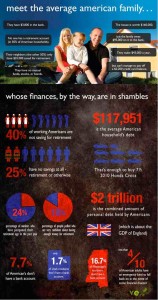The following is an op-ed I had written last year about the Senate’s health insurance reform bill, which favors the interests of large health insurance companies at the expense of expanding access to affordable health care for the small business sector. Congressman Ron Paul wrote a column on his website about corporatism, the advancement of big business interests to the detriment of our personal liberties and economic freedoms. He said it better than I did, but we are essentially on the same page on this one:
A Bitter Pill for Small Business
Proposed Health Insurance Reform Sacrifices Economic Recovery
As a small business owner for ten years, I paid the high price of limited choice. If allowed the freedom to do so, I would have chosen health plans available to the Fortune-500, options the Senate Finance Committee and the health-care lobby would deny.
But this uneven playing field could be corrected Thursday when the U.S. Senate Committee on Small Business and Entrepreneurship will hold hearings to consider the impact of the insurance reforms recommended by the Senate Finance Committee.
The genesis of this game-changing opportunity was Monday’s public break-up of the alliance between the insurance industry and Congress, an alliance that had promoted reform measures harmful to the nation’s 29.6 million small businesses.
Having spent roughly $100 million in advertising to promote the reforms, America’s Health Insurance Plans, an industry lobby group, on Monday published an analysis demonstrating that the proposed reforms would accelerate increases in medical insurance premiums.
Stung by this apparent betrayal, Senate Finance Committee spokesman Scott Mulhauser attacked the report as a “health insurance company hatchet job, plain and simple.”
The health-care industry’s initial support of the proposed reforms and even its eventual about-face on the matter simply reflect its self-interest. The industry’s support of the Senate Finance Committee’s plan was the result of government’s promised mandate that millions of uninsured Americans must obtain coverage, many with government subsidies, or face serious penalties. The insurance industry presumably calculated that these financial benefits warranted sacrificing sound underwriting practices to contain costs, as such costs could be passed on to policyholders anyway. When the Finance Committee didn’t deliver the desired mandates, the deal was no longer attractive to insurers.
But the deal was always disastrous for small businesses, so insurers likely want political cover to escape blame for rising premiums that they will have to pass on to policyholders.
Consider that costs of regulatory compliance are a significant burden hindering small business employment. The Office of Advocacy of the U.S. Small Business Administration reports that on a per-employee basis, small businesses pay 45% more to comply with government regulations than large corporations. The proposed excise tax on certain health plans represents a new administrative burden for requiring businesses to report the costs of their employee benefit packages provided by each of their vendors. Considering the 2009 Small Business Health Care Reform Survey of the National Small Business Association found that 30% of small businesses use three or more vendors, and some as many as 12 different vendors, this requirement is onerous.
Even worse is the suggestion that such excise taxes defray the costs of expanding coverage. The Senate Finance Committee would broaden eligibility for Medicaid without providing a viable plan to pay for it or contain its spiraling costs, which are increasingly borne by smaller businesses. Currently Medicaid is funded by taxpayers at 65% of costs and Medicare at 85% with the balance paid in the form of what are, in effect, hidden taxes in the form of higher premiums on private plans.
Large corporations, (defined as those with at least 50 employees) are able to escape such assessments because they benefit from self-insured health plans. The Kaiser Foundation estimates that self-insured companies covered 75 million out of 137 million workers in 2008. Self-insurance allows the flexibility of plan design to manage costs and utilization as well as significant cash flow and tax benefits.
But most importantly, self-insured plans are not subject to conflicting state mandates, as they are regulated under federal law (ERISA, the Employee Retirement Income Security Act). The plans are also not subject to state health insurance premium taxes, which typically cost 2% – 3% of premiums and they avoid insurance charges for fluctuations in claims, which typically range from 3% – 10% of premiums.
These are significant cost savings, but they are not available to smaller employers which cannot absorb any volatility in self-insured claims. Nor would the insurance lobby have any interest in expanding access for small business, as insurers earn less when they limit their role to administrators of self-insured plans.
The federal and state governments also benefit by holding small businesses hostage to limited choices as, according to the AHIP, the private sector pays 135% – 140% of the cost to subsidize the continued underfunding of Medicare and Medicaid. The federal government’s reimbursement formula incents politicians to spend more for their constituents to capture more federal dollars from Washington. Politicians postpone the day of fiscal reckoning for Medicaid, in part, by holding small businesses hostage to costly mandates.
To be sure, supporters of the Senate bill will say that small businesses priced out of the market can access coverage on the insurance exchanges. But that violates the President’s promise that those who are satisfied with their insurance may keep their plans. In any event, the insurance exchange is not financially sustainable, requiring over $800 billion in subsidies over the next decade. Comparable efforts to establish insurance exchanges in Texas, Florida, North Carolina and California all failed, in part for the inability to design plans to manage risks, which plan design restrictions are enshrined in the Senate’s proposed reform.
There is a proven model for self-funded plans that could be adapted to broaden access to affordable health insurance. Prior to starting my small business, I was a senior executive of the world’s largest reinsurer of health risks, where captive insurance programs were commonly structured to manage other insurance costs. This model can be applied to health insurance plans and, with enabling legislation, structured for small business access.
Outside the reinsurance industry, captives are not well understood. They are thought to insure a single corporate parent. In fact, captives are often structured for ownership by multiple companies, agencies or an association. Because larger groups have more predictable medical claims, captive associations are even better mechanisms for containing health insurance costs than allowing small businesses to negotiate their individual purchases across state lines.
What hinders the implementation of this solution is that it is impossible to design a single offering that complies with the mandates of all 50 states. And if such a plan were to exist, it would not offer any cost savings as the policyholders would have to be rated and priced as individual small groups within their states of domicile.
It is time to change this status quo.
The insurance lobby is correct to state that the Senate’s reform measures will raise the cost of coverage. The President is correct to state that small businesses need affordable health insurance to expand job creation. On Thursday, ranking Senate Small Business Committee Senators Mary Landrieu (D-LA) and Olympia Snowe (R-ME) should resolve this apparent conflict by calling for enabling legislation for health care entrepreneurs to design ERISA-qualified captive health benefit plans for small business associations. That would be a win for everyone’s stated goals.
 …and why we need to build our own businesses to create wealth. I remember once reading that a job means that you are “Just Over Broke”. Owning your own business means you can pay your self first, set aside greater funds for your retirement in a SEP-IRA or other tax-advantaged savings vehicle and start building equity.
…and why we need to build our own businesses to create wealth. I remember once reading that a job means that you are “Just Over Broke”. Owning your own business means you can pay your self first, set aside greater funds for your retirement in a SEP-IRA or other tax-advantaged savings vehicle and start building equity.





